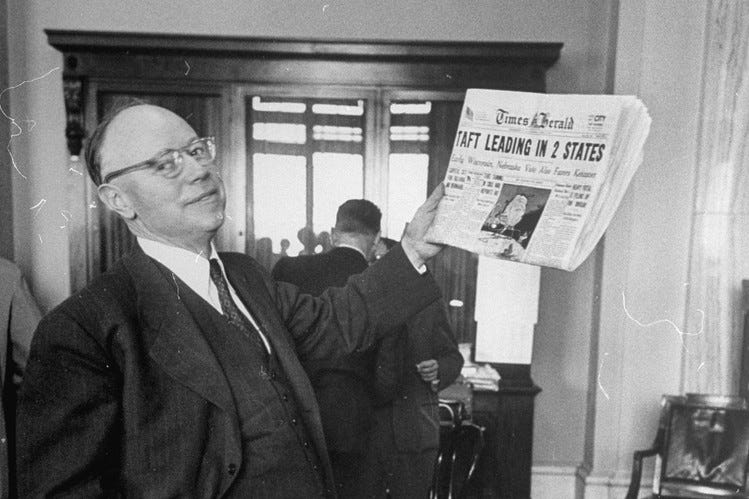Remembering US Senator Robert Taft Jr.
One of our nation's most consequential public servants died 70 years ago today. He and his legacy are worth remembering, honoring, and emulating.
Those on my tour of the US Capitol may remember the first place we visit - the Senate's reception room (now going through an extensive renovation). It was part of an 1860 expansion that included the current Senate and House chambers, Congress having outgrown their previous enclaves as the nation expanded westward (“Manifest Destiny”).
With more people flocking to Washington to visit with their US Senators, they wanted a place to greet them. Today, the Senators are more likely to be greeted by lobbyists in the room leading in and out of the Chamber or the adjacent LBJ Room, named for the legendary former Senate Majority Leader who used that room as his leadership office and later served as vice president and president. Still, when Senators need to be near the chamber for votes with visiting constituents, it reverts to its original purpose.
I start my tour by pointing out the "porthole" paintings left to be filled by the Senate's estimable Renaissance painter, Constantino Brumidi. In 1958, freshman US Sen. John F. Kennedy (D-MA) was chosen to chair a special Senate committee recommending the five most essential members ever served. Tough duty, with all the egos involved.
The first three were easy, the Senate's famous "triumvirate" of abolitionist Daniel Webster (Whig-NH), states' rights advocate John Calhoun (D-SC), and Henry Clay (Whig-KY), appropriately placed between his colleagues.
The other two Senators chosen were Republicans - Robert "Fighting Bob" LaFollette (R-WI) and Robert Taft Jr. (R-OH), "Mr. Republican" who is credited as the primary author of the Legislative Reorganization Act, which created a new leadership and management "system" for Congress that primarily still operates today.
Taft died on this day 70 years ago. The story goes that after the Senate's GOP floor leader lost the GOP presidential nomination to Dwight Eisenhower in 1952, the new President invited Taft to play golf. Taft complained of back pain during play, and Eisenhower offered to have his physician take a look at him. Cancer was found. Taft died months later.
His selection as one of our nation's most consequential US Senators and public servants should surprise no one. His record, integrity, and leadership are models for public servants everywhere, a legacy worth emulating, especially today.
Issues and Insights published a guest column today by Paul F. Petrick, a Cleveland attorney, outlining much of Taft's story. It is worth your time.
Senate chronicler Allen Drury called Taft one of the Senate’s “strongest and ablest men” and modeled on Taft the virtuous lawmakers in his 1959 Pulitzer Prize-winning novel “Advise and Consent.” Fresh off winning the 1948 World Series, liberal baseball owner Bill Veeck was asked to run against Taft in 1950. Veeck declined out of his admiration for the senator, describing him as “one guy who knew how to say no, a rare talent in politics.” And John F. Kennedy, who served briefly with Taft on the Senate Labor Committee, included Taft as the final senator profiled in his Pulitzer Prize-winning history “Profiles in Courage.”
https://issuesinsights.com/2023/07/31/robert-taft-a-senator-for-all-seasons/




